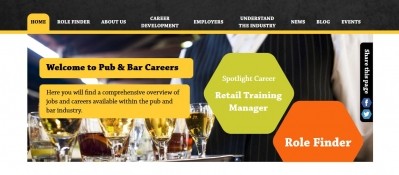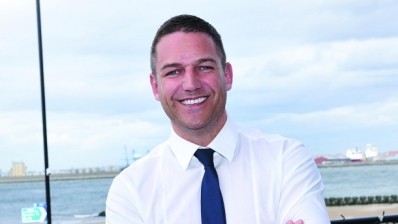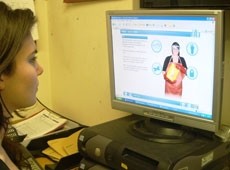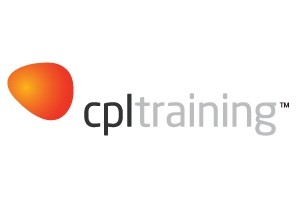The Big Interview: Daniel Davies: CEO, CPL Training Group
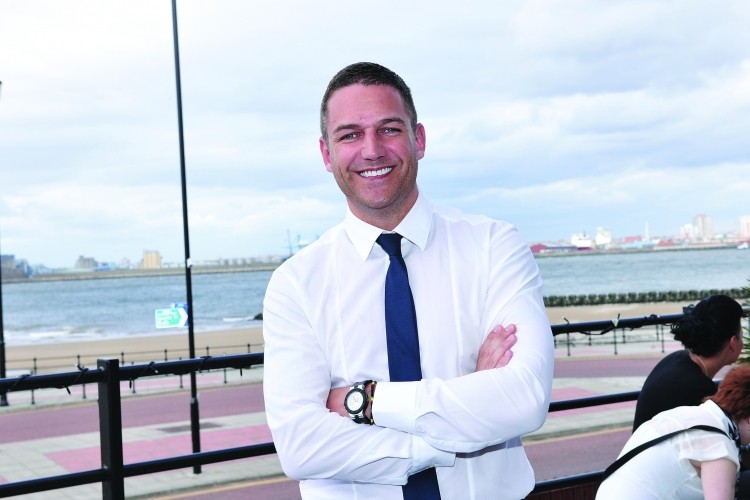
I first met Dan Davies on the piste (sic). It was the Association of Licensed Multiple Retailers’ (ALMR) annual ski trip, and what he lacked in natural Alpine ability he more than made up for in supernatural après-ski performance.
Who is this playboy businessman with the easy Scouse charm and reputation for partying as hard as he works? What’s the story behind this late-night legend — and winner of my best anecdote award for 2014: involving the morning after the night before in Chicago, a public park, some Japanese tourists, an old lady and a small dog?
Let’s rewind a couple of decades. Davies was 18, and had been running a Liverpool nightclub. Then, much to his parents’ delight, he secured a job working for a bank. But three months in, on his way to work, he experienced a chilling vision, immediately turned the car around and drove back to the club.
“I saw myself in my 40s, with 2.2 kids, driving a Ford Mondeo,” he says, before shooting me a sympathetic glance and adding: “Not that there’s anything wrong with that.” It’s OK, he couldn’t have meant me, I convince myself. I own a Volvo.
Davies is now in his 40s (just), and enjoys quite the lifestyle. But he also commands huge respect from his staff and clients at CPL, the business he founded in 1994.
“I do still sell to customers directly,” he says, “though that tends to be on the bigger pitches. I concentrate on the strategy — the next big thing.”
It wasn’t long ago when Davies spotted that the next big thing would be online training, or e-learning as it’s better known.
“In 2007, 80% of our business was personal licence holder (PLH) qualifications,” he recalls. “And it was all classroom-based.
“But by this stage it was a mature market, which had peaked at 104,000 qualifications per year. We all made hay when it was on the up, but some didn’t plan for what would happen after those numbers fell.
“We realised that we needed to broaden our offer and find other areas to move into.”
Strategy
CPL focused on a four-pronged strategy to future-proof the business: online; international; work-based learning (NVQs and apprenticeships); soft-skills training. Developing an online capability was first and foremost.
“We weren’t going to be the first mover in e-learning, but we were still early in its lifecycle, and knew we could be better, slicker and more user-friendly than others,” says Davies.
In an effort to start from somewhere other than scratch, CPL attempted to partner with an existing e-learning company, but Davies says he wasn’t happy with the quality of its offering.
“So we did competitor analysis, took other people’s courses, ranked them, spoke to our customers who were open to e-learning and crafted a system around them.” Davies admits there were (and remain) concerns about the value of e-learning, but many companies have now bought into its upsides.
“It’s cost-effective, you can train more people at the same time, you can train in venue and without time off, you can have instant access to training records… ”
Davies reels off the list of benefits quicker than I can write. But he returns to value.
“There’s a high churn of staff in the on-trade, so training must be cost effective.”
That’s not to say that e-learning is the ‘be-all and end-all’.
“The education sector now takes a blended approach to learning,” says Davies.
“It’s neither all e-learning nor all face-to- face, but about finding the best solution for the learner.
“In classrooms you often have to teach to the lowest common denominator -to the least experienced person. But if all members of a team do e-learning first, they all come to class with the same level of base knowledge. And face-to-face training works better then.”
Partnerships
Davies says the company’s web development capabilities have allowed it to build other software and back-office solutions, including intranet sites for Stonegate, Beds & Bars and Revolution.
CPL has also developed innovative partnerships with key industry suppliers, including Carlsberg, Coca- Cola, Heineken and Sky to deliver free or heavily discounted courses to their customers.
“We plan to grow with these businesses,” says Davies. “We want to understand their challenges and add value. That’s where others have gone wrong — developing training programmes in a dark room. We go in with a blank sheet of paper to discover issues and create solutions.”
While CPL was developing its digital know-how — consistently reinvesting 50% of its profits into R&D — and embedding itself deeper into its customers’ businesses, Davies says that some of his competitors were distracted by the opportunity to make a quick buck as the PLH deadline loomed.”
CPL chose to hold its prices. And in any case, the smash-and-grab didn’t last as the PLH training market halved to its current level of 55,000 courses a year.
“At one point there were 660 companies offering PLH training, including a lot of one-man bands,” recalls Davies.
“Now there are around 150, but even among the top 20, CPL does more than the next 19 put together.”
Despite its dominance of the PLH training market, that work now represents only around 30% of CPL’s more diversified business today.
While it has since withdrawn itself from workplace learning, because of the unpredictability of Government funding, CPL’s expansion overseas — into the Middle East, Europe and America — has been more successful.
As has the company’s foray into other markets. In some cases, CPL has found demand for existing products that work across geographies and sectors, eg, health & safety, manual handling, food safety. And in others — where specialist expertise is required — it has used joint ventures to establish a foothold.
Expertise
“We’re now the biggest UK provider in the care sector, in a JV with a company with its own care homes and private hospital. They’re our care sector experts,”
Davies reveals. Davies — for all his empire building — remains visible in the pub industry. He sits on the ALMR Council House Committee and is an active member of the Perceptions Group, which is dedicated to raising the profile of the on-trade as a career option among school and university leaders.
And his CPL co-founder Paul Chase is a vocal and frequently published critic of the anti-alcohol lobby.
“I’m very happy for him to do that,” says Davies. “Some of their lies need to be challenged. Sometimes we can be more vocal and say things that operators can’t. You’ve got to give time to these things for the good of the sector, which is too heavily regulated and suffers too much red tape.”
But despite its challenges, Davies remains very positive about the future of the pub sector.
“There are lots of great operators out there blazing a trail, with great entrepreneurial spirit — and we have the benefit of working with many of them.”
He name-checks a number of award-winning multiple operators: Yummy, Whiting & Hammond, Anglian Country Inns, etc. before adding that he is also hugely impressed with some larger managed pubcos, including Spirit Pub Company and Stonegate.
Trends
In terms of future learning and development trends, Davies believes the market will be looking for shorter, sharper training interventions.
“We’ll see more five-to-10-minute, high-impact online refresher courses,” he predicts.
“Induction training is also going to be key,” he adds.
“Some companies are doing it just right. Others struggle, especially those that operate different brands. Ten new starters working at 10 different sites for a medium-sized, national company will all have different experiences.
“A good induction allows you to say who you are and where you’re going, and to communicate your company’s brand values and career opportunities. It means staff understand the business more quickly and hit the ground running.”
Davies has had precious little need for inductions during his own career, which has been with CPL man and boy. In the early days he relied heavily on the help of some experienced non-execs, but now has a trusted management team.
He says he has no desire to exit the business, instead concentrating on a 10-year growth plan that may or may not involve the injection of funds from private equity to finance strategic acquisitions and accelerate CPL’s progress in America.
That’s if they’ll have him back after the Chicago episode!
Davies on...the BII
In 2007, the BII was sat on a cash mountain. They had everything to play for and they f*cked it up, making decisions the organisation is still reeling from.
They had an arrogant position in the sector, and didn’t plan for what would happen after the PLH market peaked. They spent millions of pounds on a head office in Camberley that the BII is now trying to sell, and they allowed mission creep.
The ALMR became a very tangible and focused association; and the BBPA crafted its own position. But the BII didn’t. It allowed its membership to go into decline, and for its relevance to be called into question.
It’s a common misconception that CPL viewed the BII as the arch-enemy. And it’s not true that we’ve ever wanted the BII to go out of business.
It’s just that we introduced competition to the marketplace and they never forgave us for it. I want the BII to survive, but to do so it needs to create an offer with really strong membership benefits, not like you’d get from a bank account or credit card, or from a Cornflake box.
The BII’s awarding body has suffered from being sector specific, and was attacked by others offering bargain prices. It didn’t have the infrastructure, the scale, or the money to compete. But it does now have an opportunity to get people involved who can take it to the next level.
A deal could be done and some equity retained by the BII. And with the sale of Camberley, that would give the BII some breathing space.
I’ve shared that vision — and been listened to. The ball’s in now their court.
Our two organisations now have a good working relationship. We’re offering BII qualifications, and have moved our PLH business to the BII in a £1m five-year deal.
